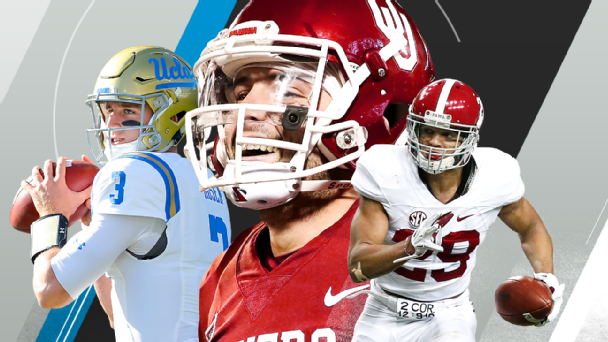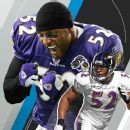SANTA CLARA, Calif. — The night before the San Francisco 49ers wrapped up their first season under Kyle Shanahan, the first-year head coach stood up in front of his team and took the assembled players and coaches on a short walk down memory lane.
Shanahan talked about his team’s 0-9 start, the work it took to get that long-awaited first win, against the New York Giants, and the four-game winning streak the 49ers took into the season finale against the Los Angeles Rams. The next day, the Niners would wallop the resting Rams, allowing them to finish the season as the NFL’s hottest team and post a 6-10 record.
In a way, the roller-coaster of a season was a logical conclusion to the wild ride that was the first year of the Shanahan era.
“One of the main things that I wanted to find out this year was really who we were,” Shanahan said. “Who the coaches were, who the players were. I always say I don’t think you can find out about people until you can see how they handle adversity. To start 0-9, that was a lot of adversity for us, and I think it’s not a coincidence that not many teams have finished after that with more than three wins. That’s adversity, and it usually tears people apart, but we’ve got a bunch of good people in our locker room and they stayed together.”
While the old cliché says that a football season is a marathon, not a sprint, one could easily make an exception for the Niners’ first season under Shanahan and general manager John Lynch.

Kirk Cousins. Jimmy Garoppolo. Le’Veon Bell. This class could get wild. Here’s everything to know heading into free agency, which begins March 12.
It was exactly one year ago Tuesday that the 49ers officially announced Shanahan was taking over. That came after a lengthy waiting game in which the Niners watched as Shanahan, then in his role as offensive coordinator, and the Atlanta Falcons kept winning postseason games. Because league rules stipulate that coaches on teams still in the playoffs can’t be hired until their seasons are complete, the entire NFL world went roughly two weeks knowing that Shanahan eventually would take over the 49ers.
When that finally happened, Shanahan had no choice but to hit the ground running with Lynch in an effort to rebuild a team that had dropped to 2-14 in 2016. What followed was a rush to fill out a coaching staff, begin scouting college prospects and potential free agents, sign a huge free-agent class, make some difficult (and quick) decisions on their own roster, host college prospects on visits, go through the draft, begin the offseason conditioning program and go through organized team activities.
There was little time to come up for air, and soon enough, the 49ers were back for training camp. By then, the process of sorting through a roster that had just gone through massive turnover became the focus. Along the way, the Niners lost projected starters such as linebacker Malcolm Smith and guard Joshua Garnett to season-ending injuries.
When the season began, the Niners promptly dropped nine in a row, becoming the first team to lose five consecutive games by three points or fewer. Despite the series of crushing defeats, Shanahan stuck to the plan, and his players’ belief in his message never wavered.
“No one was where we wanted to be and the season was kind of not looking very fun, but he was able to stay the course,” 49ers left tackle Joe Staley said. “I think his first head-coaching year was very, very impressive because of what he had to go through. It was no success early for him. He was able to build a locker room that was 2-14 the previous year and going through an 0-9 start and still had us believing.”
To be sure, the losing wasn’t the only test Shanahan would face in his first season as a head coach. In addition to injuries, he also had to navigate an escalating situation with linebacker and fan favorite NaVorro Bowman. Bowman, who was returning from an Achilles injury, wasn’t the player he once was in the Niners’ eyes, and they began reducing his workload. As you’d expect for a proud player such as Bowman, he wasn’t thrilled with that idea and went so far as to request a trade from the only team he’d ever known.
After shopping Bowman, Shanahan and the Niners eventually cut him loose to choose his own team rather than forcing a trade to a destination Bowman didn’t prefer.
From the reduction in playing time to the day of Bowman’s release, Shanahan maintained his straightforward approach, repeatedly emphasizing the need to see the big picture for the organization.

When: April 26-28
Where: Arlington, Texas
NFL draft home page » | Draft order »
•![]() Todd McShay’s Mock Draft 2.0 »
Todd McShay’s Mock Draft 2.0 »
•![]() Mel Kiper’s Mock Draft 1.0 »
Mel Kiper’s Mock Draft 1.0 »
• Which NFL teams could draft a QB? »
• Kiper’s Big Board » | McShay’s Top 32 »
• 2018 draft QB class primer »
• Underclassmen who have declared »
“When you have a guy who had the type of career that Bo had had here, the type of guy he was, it would have been much easier to maybe ignore it,” Shanahan said. “You never know how people are going to react. That press conference was real tough for us because it’s not something that we’re wanting to do. We just felt it was the best thing to do. I’ve learned over my career that sometimes things you think are the best thing, perception-wise and stuff, sometimes it comes back and bites you a little bit because not everyone understands.
“That was something we had to do, that we believed would help us in the long run. We thought it was better for Bo, too. To sit there and stay strong with it, I thought it went over well. I thought it tested our organization pretty good. Didn’t know how everyone would react to it. I think everyone felt the same. It was something that no one was happy about, but I think everyone understood and it made me believe and feel a lot more comfortable where I was. I felt everyone in here had each other’s back and understood tough decisions you’ve got to make. Hopefully they end up being the right ones.”
About two weeks later, Shanahan and the Niners made a much easier decision: trading for quarterback Jimmy Garoppolo. Garoppolo’s arrival solved the Niners’ biggest issue and set them up to win those final five games. It also now has the Niners looking at much loftier expectations in Year 2 under Shanahan.
In the earliest Super Bowl LIII odds released by the Westgate Las Vegas SuperBook, only seven teams have a better shot at winning next year’s big game than the 49ers, who are starting with 20-1 odds. All that for a team that a year ago at this time was considered a 300-1 long shot to win the Super Bowl.
Suffice to say, the hype around Garoppolo and the Niners is only going to continue to build as we head toward next season. And so begins a whole new challenge for Shanahan.
“I get everyone is excited, especially when you finish the season with five in a row or six out of the last seven,” Shanahan said. “We understand that. But I also know that doesn’t help at all. It’s not going to help you play better. I know one thing is for sure: When we get to Phase 1 or when we get to OTAs that we won’t be the exact same as we were right now. We will either be better or worse. The only way you get better is if you work. If we don’t, I promise you we’ll be worse.
“We’ve got to go right back to work, work just as hard as we did last year and try to be the best you can. When you think that way and you don’t pay attention to anything else, usually good things happen. This is how we planned for it to go. We wish we would have won more games this year. We were definitely hoping to. But I am proud of how we finished. We’ll have that exact same mindset going into next year.”









